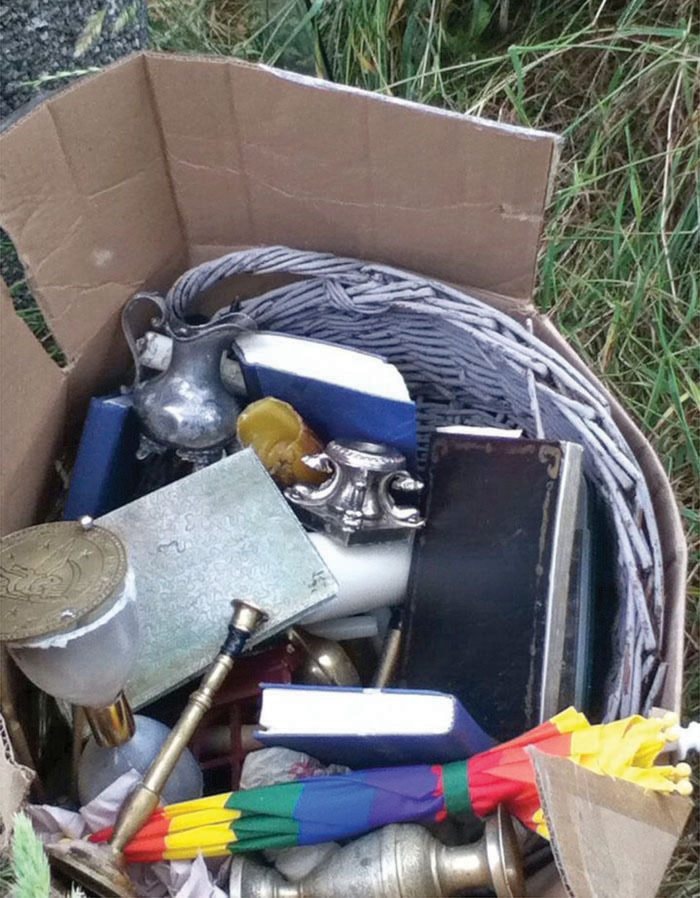Oak Bay plans to revisit its dumping bylaws as volunteers and staff continue to find trash turfed in public spaces.
While clearing ivy from the oaks on the municipal land just across from the Island Road entrance to Anderson Hill Park recently, volunteers discovered a large, dead Christmas tree, a large piece of glass and a box containing candles, candle holders, brass and pewter pitchers, books from the Juan de Fuca branch of the Greater Victoria Library and more.
The biggest problem park in Oak Bay is the gravel lot off Cattle Point, says Chris Hyde-Lay, Oak Bay’s manager of parks.
“It can be anything from plant material to couches. It happens frequently enough for it to concern us,” he said.
A couch, for example, takes a half hour of staff time to go pick up, then it sits in the yard awaiting a trip to the Hartland Landfill. The district composts and recycles what it can, sending only the non-recyclables to the landfill.
“It’s a growing problem in Oak Bay. We find that people are leaving garden debris in our parks, they’re leaving non-recyclables in our parks,” said mayor Nils Jensen. “We spend approximately $7,000 annually to remove debris that has been dumped illegally throughout the municipality. There is a real cost to this illegal dumping.”
Staff are liaising with Oak Bay Police in an effort to nip the growing trend in the bud, particularly in parks being hard hit, such as Cattle point. If caught, violators can face a fine.
“They can face a ticket, but because it hasn’t been much of a problem in the past, our bylaws, in terms of that ticket, are out of date,” Jensen said of the $50 fine. “It is something we will review given the magnitude of the cost to the public.”
Aside from the look of trash in parks, there are dangers associated with ditching items, for example television sets that contain glass and other dangerous components.
“We really encourage people to do the responsible thing and recycle their junk, don’t just dispose of it in our parks,” Jensen said. “Not only is it a visual blight, it can result in creating dangerous situations.”
